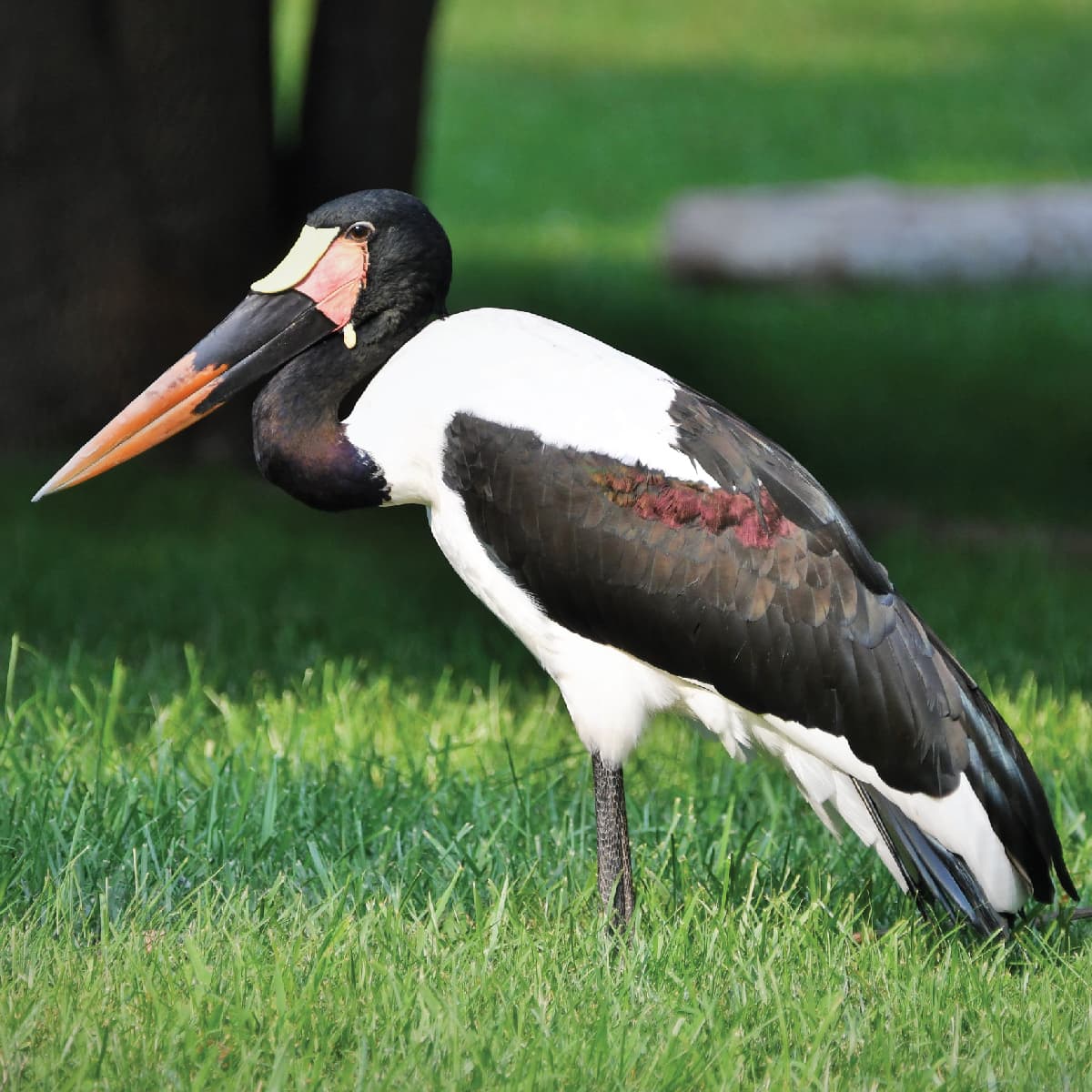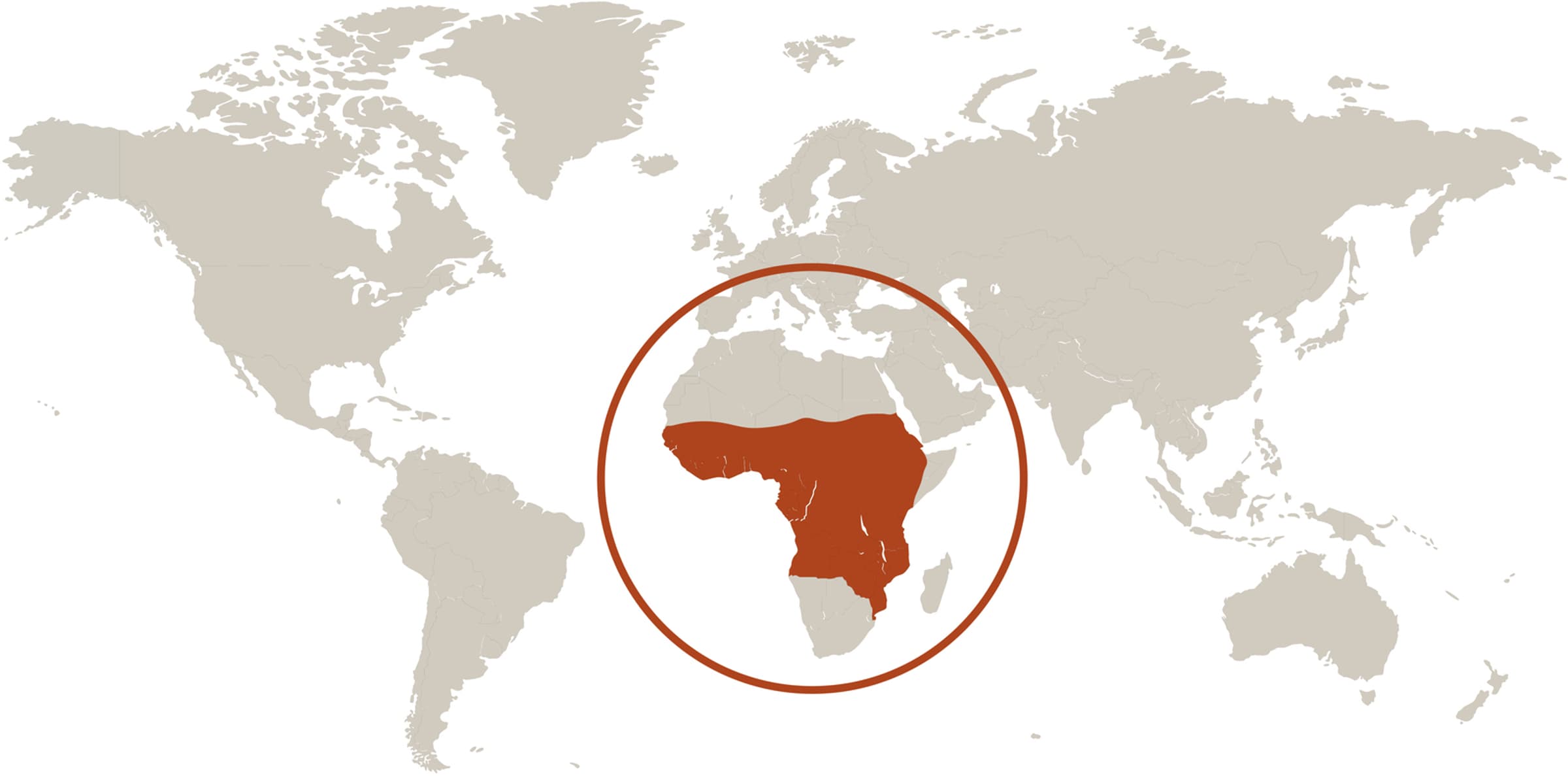
Saddlebill Stork
Ephippiorynchus senegalensis
Did you know?
- The yellow "saddle" across this stork's enormous multi-colored bill gives the bird its name.
- The saddlebill stork is one of the largest species of storks.
- The stork reaches adult size by its first birthday but does not have adult plumage until it is two years old.
- They tend to soar when flying, only flapping their wings occasionally.
- A female lays one to five eggs per clutch.
Now, That's a Bill
Its long legs and upturned beak help this wading bird catch fish, frogs, and insects in shallow, freshwater marshes.
Together Forever
A male and female are thought to mate for life. The pair builds enormous treetop nests and cooperates in sitting on the eggs and raising the chicks.
Threat Level
- Unknown
- Common
- Near Threatened
- Threatened
- Endangered
- Critically Endangered
- Extinct in the Wild
Least Concern
The Saddlebill Stork is widespread and abundant.
Range
Sub-Saharan Africa
Habitat
Rivers, lakes, swamps

We care about saddlebill storks
The Saint Louis Zoo supports saddlebill storks in Red Rocks.
Find this animal in Red Rocks

SAINT LOUIS ZOO ZONE
Red Rocks
At Red Rocks, you’ll view some of the world’s most powerful predators living near some of the world’s most graceful prey. Lions, tigers, zebra and giraffes all share the natural rocky boulders and outcroppings as their territory. With shading trees and a bird or two among the mammals, Red Rocks is a great place to spend a day at the Saint Louis Zoo.

